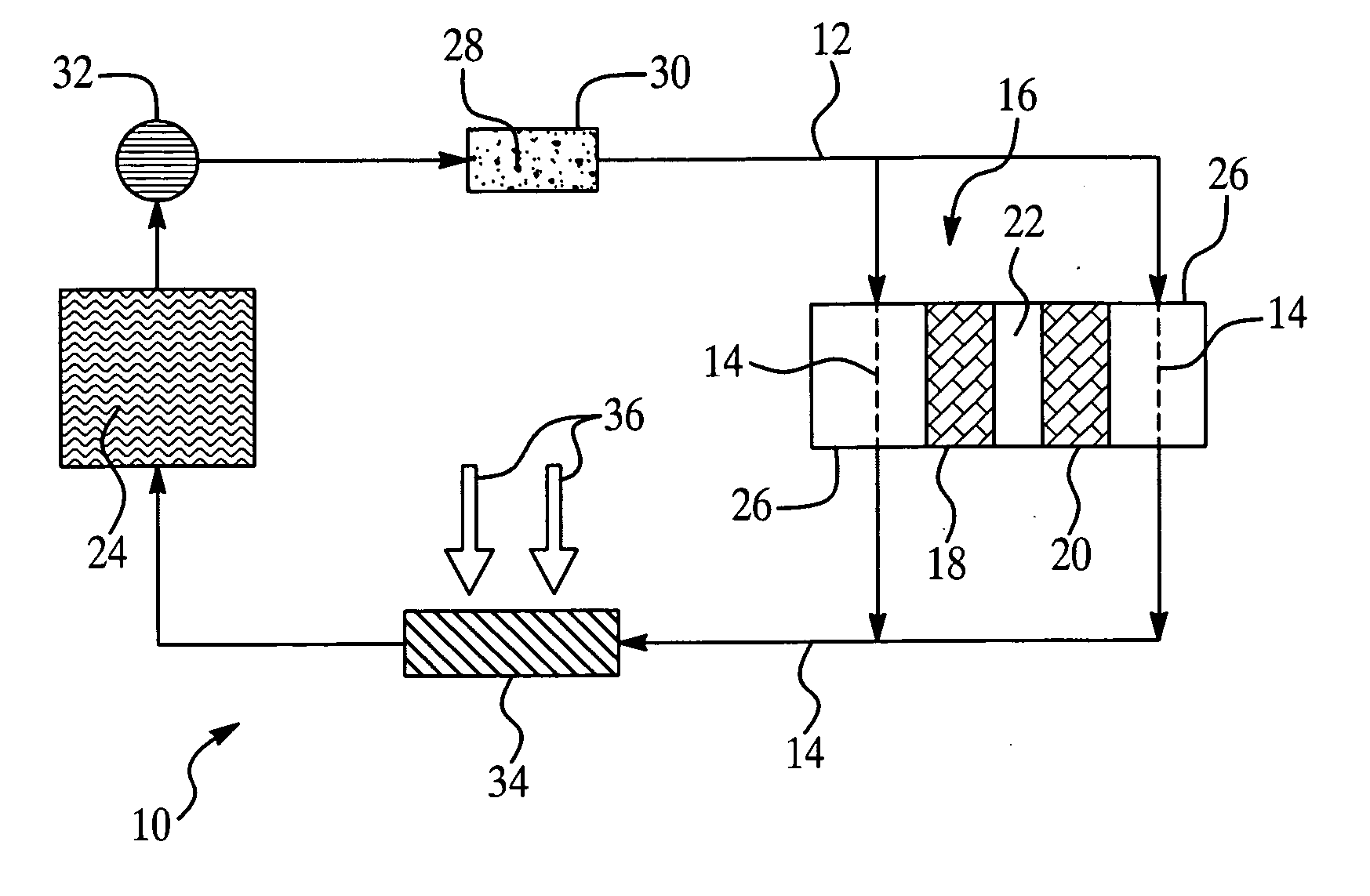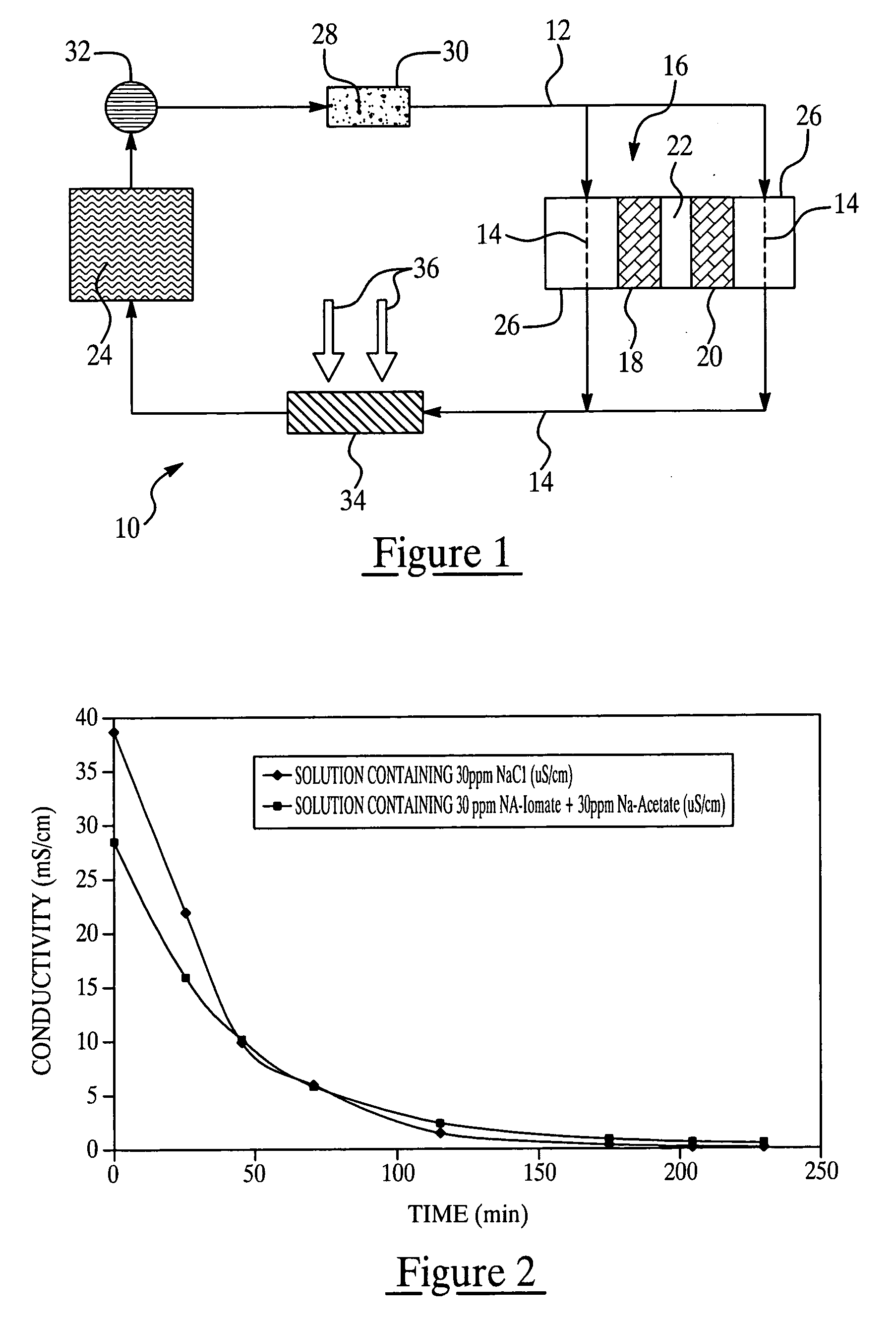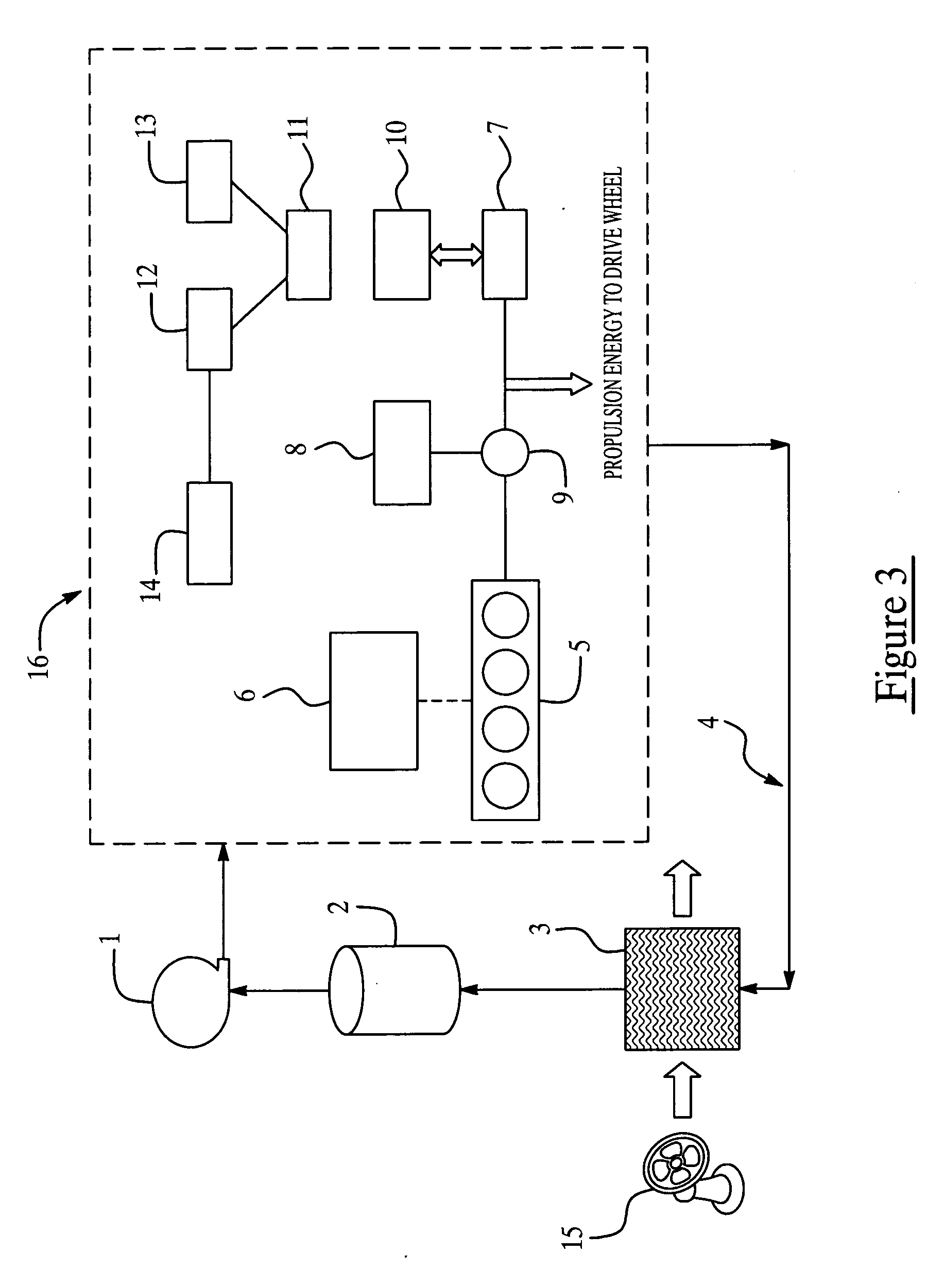Colorant treated ion exchange resins, method of making, heat transfer systems and assemblies containing the same, and method of use
a technology of ion exchange resin and colorant, which is applied in the direction of sustainable manufacturing/processing, thermography, and final product manufacturing, can solve the problems of unsuitable (or not optimized) use of traditional prior art heat transfer systems and heat transfer fluids with alternative power sources, increased corrosion and/or short circuit of electrical current, and electrical shock
- Summary
- Abstract
- Description
- Claims
- Application Information
AI Technical Summary
Benefits of technology
Problems solved by technology
Method used
Image
Examples
example 1
[0112] The conductivity as a function of colorant concentration in de-ionized water at room temperature was evaluated per Table 1. Solutions of the various colorants identified below were mixed in de-ionized water at room temperature under simple agitation. Conductivity was measured via a Traceble® bench conductivity meter manufactured by Control Company, Friendswood, Tex., USA.
TABLE 1Concentration ofColorant in SolutionConductivity of SolutionColorant Name(mg / L)(μS / cm)Uranine1Blank0.30203.36508.2710016.67Liquitint ® Red STBlank0.27200.45500.581000.65Liquitint ® BrightBlank0.28Yellow201.97504.351008.36Liquitint ® Patent BlueBlank0.30201.79503.951007.41Liquitint ® BrightBlank0.28Orange201.11502.231004.05Acid Red 521Blank0.25205.985013.410033.9
1Acid Red 52 is commercially available from Chromatech of Canton, MI. Uranine is commercially available from Honeywell-CPG of Danbury, CT
[0113] It can be seen that the two commonly used antifreeze dyes, i.e., Uranine and Acid Red 52 dye posse...
example 2
[0114] The Liquitint® Red ST dye was also found to be stable at 80° C. in 50% Ethylene glycol+50% de-ionized water (all as volume %). A test was done by dissolving 20 ppm Liquitint® Red into 50% ethylene glycol+50% de-ionized water solution (V / V). The solution was separated into two parts in two clean beakers. One was heated at 80° C. for about 45 minutes. The conductivity of the two solutions before and after the heating was recorded. There was no noticeable change in the solutions. The conductivity of the solution showed essentially no change before and after heating (Blank and before heating at 80° C.: 0.45 μS / cm; kept at 80° C. for ˜45 min and cooled down to room temperature: 0.48 μS / cm).
example 3
[0115] The effect of the non-conductive dyes upon the corrosion of metals in a fuel cell heat transfer system was evaluated.
[0116] Metal samples according to the following were cleaned with cleaner and de-ionized water before separating into two identical sets and put in 2 clean glass flasks. Each flask contained 4 cast Al coupons, 4 brass coupons, 4 stainless steel (SS316) coupons, 2 brazed Al coupon, 2 silicone gasket, 4 Viton O-rings. The total surface area was about 392 square centimeters. 300 ml 50% ethylene glycol+50% (volume) DI water was added into one flask while 300 ml 50% ethylene glycol+50% (volume) DI water+20 ppm Liquitint® Red ST was added to the second flask.
[0117] The conductivity of each solution was recorded as a function of time. Since corrosion of the metals will generate ionic species and increase the solution conductivity, the conductivity of the solution was used to indicate the extent of the corrosion of the metal samples in the flasks. The results obtaine...
PUM
 Login to View More
Login to View More Abstract
Description
Claims
Application Information
 Login to View More
Login to View More - R&D
- Intellectual Property
- Life Sciences
- Materials
- Tech Scout
- Unparalleled Data Quality
- Higher Quality Content
- 60% Fewer Hallucinations
Browse by: Latest US Patents, China's latest patents, Technical Efficacy Thesaurus, Application Domain, Technology Topic, Popular Technical Reports.
© 2025 PatSnap. All rights reserved.Legal|Privacy policy|Modern Slavery Act Transparency Statement|Sitemap|About US| Contact US: help@patsnap.com



